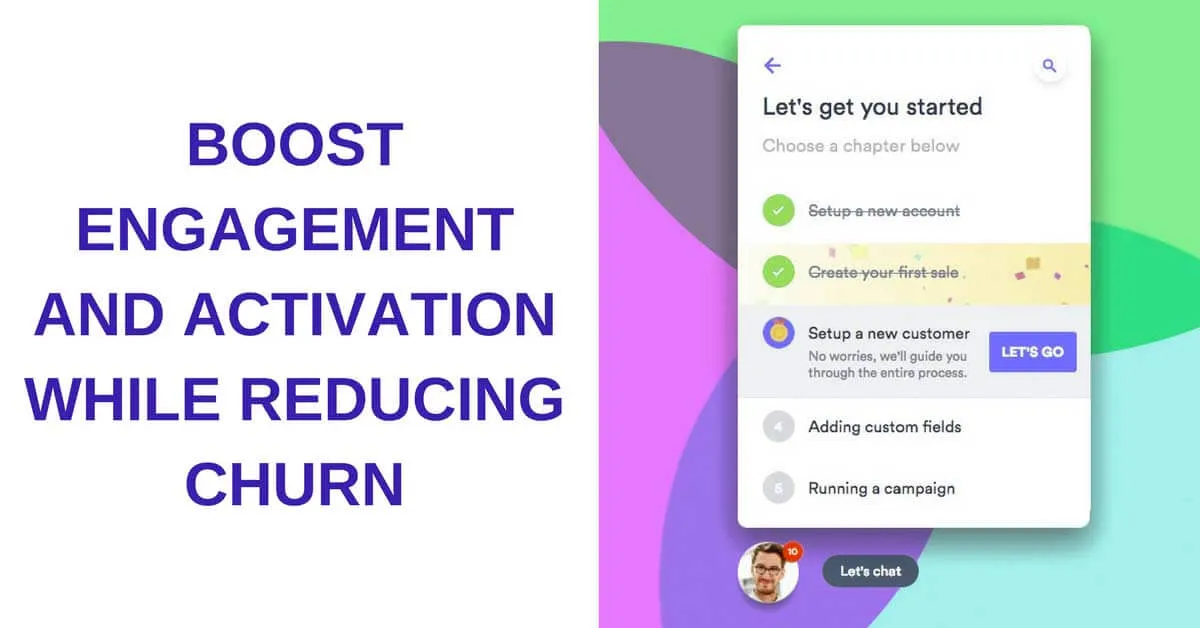Gamification Techniques for Customer Success
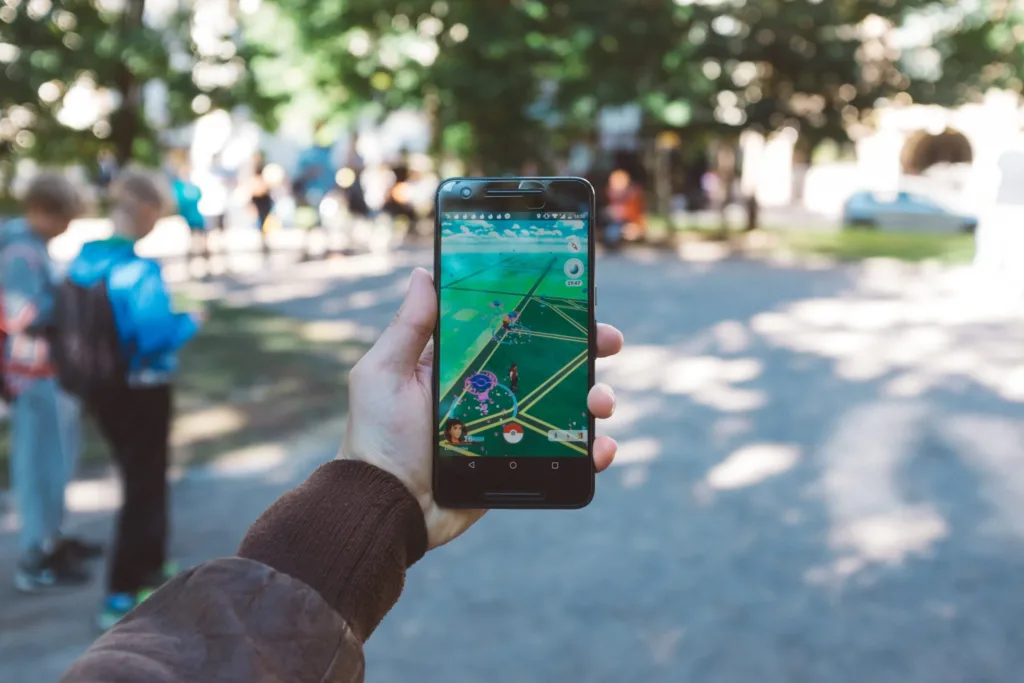
Gamification as a concept has been going around business circles for quite some time. For Saas companies, learning how to implement advanced gamification techniques into the customer journey, though, can truly make the difference in terms of user engagement and activation.
Most of us are familiar with basic gamification elements and also experience them on a daily basis. Gamification has rapidly made its way through different sectors and situations of our lives and managed to shape our behavior in different circumstances at work, at home, in stores…
Gamification is connected to several psychological theories that involve triggers, biases, and basic proxies which can be used to positively impact behavior. And marketers are obviously very familiar with basic notions and tactics.
Humans and other animals learn by playing. And the pleasure which derives from playing is a cornerstone of evolution. Satisfaction and accomplishments are powerful motivational tools that pushed our species to explore our world beyond the boundaries determined by simple needs connected to survival. Games and playing activities are highly connected to intelligence and flexibility, and the challenges we love to tackle allowed us to investigate and comprehend our reality a lot better.

Gamification is strictly linked to games but doesn’t aim to transform every activity into a quest with points and badges. Gamification means learning from games to address everyday challenges from motivating employees at work to managing an international diplomatic crisis. Therefore, gamification, even if unrelated, is strictly rooted in game theory and social psychology and it’s extremely beneficial for SaaS companies that need to create the perfect customer journey that leads to success.
The use of game elements and game design techniques in a business context is definitely not a new strategy, but while we’re all familiar with basic concepts such as contests or rewards, not many SaaS businesses truly master the art of creating motivational triggers with advanced gamification techniques when it comes to designing their user experience.
Table of Contents
Gamification Elements in Game Design
Games are focused on the players and their experience. Game designers know how to create the perfect journey that always leads to a great, immersive experience. Games are pleasant and intriguing for rookies and step by step become always more challenging and introduce new elements to amuse the experts.
Designing games is an extremely complicated task. Users become more skillful while playing and game designers need to find the perfect balance that leads to curiosity without generating frustration. Game designers need to onboard their users quickly, guide them through the logic and features of the game and follow their journey while motivating them to continue and introducing novelty at each step. If players evolve too quickly, the game becomes dull, if a challenge is too hard, the players feel frustrated. There’s a very fine and blurred line that creates the perfect UX.
Basic recurring elements which are easy to spot in games are:
- Fast and entertaining onboarding (learn by doing not by reading a ten-page pdf file!)
- Increasing complexity
- Checklists and progress bars that motivates players to improve their status
- They show where the journey is heading to and create concrete expectations (reach 2K points and you’ll be able to jump higher)
- Points connected to rewards (improving their status quo)
- A rigid step-by-step system of levels and achievements that forces users to follow the path created by the designer
- A list of achievements and a collection of assets/resources to prove progress
- Novelty elements to maintain attention
- A social graph or leaderboard to create a benchmark and push players to mastery
- The opportunity to share progress and achievements with others
- Levels, bars, and displays to remind users of how far they have already gone and encourage them to move on
- Recognition and approval: the classic pat on the shoulder to congratulate players for their new achievements
- Badges and rewards to foster loyalty and engagement
- Push notifications and continuous communication that lead to activation and habit formation
But beyond this conventional elements, games draw from several other psychological triggers that generate curiosity and engagement while spawning intrinsic motivation.
General Gamification Tactics we Experience Everyday
From the employee of the month to sales leaderboards in companies, loyalty cards at the supermarket and status reports for credit cards or frequent flyer reward programs, our world seems to be ruled by gamification.
Countries follow a point system connected to economic rewards when they reduce their carbon emissions and results are public. This sort of social graph is an essential component, of course.

We’re more likely to achieve our goals if others are following our progress and comparing our results with other players. This is the same mechanism that applies to group therapy (for addressing an addiction, for example) your weight-loss program or the app you use when you start jogging that posts your progress on social media.
Companies often take advantage of these mechanisms to create a healthy level of competition or to create contests. Everything can be designed as a game, and parents know that very well and apply all these rules to potty train their toddlers or reward kids when they brush their teeth.
Everybody can think like a game designer and this skill is particularly helpful for SaaS product managers, customer success managers, and UX designers.
People need to be motivated. And motivation is strictly connected to seeing immediate results, understanding what impact these results have and how these contribute to improving their current status quo.
We all aim to improve our personal condition. Gamification is used by schools and businesses to show how to move up to a better state. The journey we map for our users has to be explicit and communicated from the very first interaction. Storytelling in ads or blog posts, sales calls, explainer videos…all show how our product improves our user’s life and we need to keep reminding our customers of what they’ve already achieved and what difference we made in their life.
Several companies are extremely skilled at implementing gamification tools and modern technology makes things even easier.
I recently saw an ad for a furniture store that allows you to design your bookshelf and place it in your house before buying it using your smartphone and augmented reality. Clothing stores use AR to help customers accessorize while others went even as far as implementing virtual reality at their brick and mortar locations.

Sure…these features are highly functional. I don’t need to measure my wall to see if the bookshelf fits, I can just see it! But these elements also add novelty and a sort of game feeling to dreary activities.
Gamification surrounds our life and influences our choices and behavior, from purchasing habits to our career, health, and personal finance.
Gamification and the Customer Journey
Every interaction with a brand is connected to a specific feeling. When we are exposed to ads or emails, when we discover a product, when we test it, sign up, create an account, need support, require additional features, renew our contract…
Each single touchppoint determines the overall impression a customer has of a business and can either lead to frustration and churn or to loyalty and referrals.
Every step of the customer success journey can be linked to gamification techniques.
An important analysis that businesses carry out is mapping the status of their clients along the journey.
It’s easy to show that using for example an online retailer:
A potential customer needs to buy sport shoes for example. They don’t have a favorite brand and don’t always purchase from the same store. Let’s see how they feel along the journey.
They first search for sneakers in their favorite search engine. They feel pretty neutral. The first result they see is an ad that promotes a store that offers the latest collections at a very reasonable price. The ad includes pictures and slashed prices (with discounts). The potential customer feels intrigued.
If the ad matches the landing page, the user feels good and can immediately start browsing through the different brands and models. If the store is well designed, the customer can easily move through different products and is invited to explore the store with clear indications and tips. The experience is pleasant and rewarding. They feel empowered and they experience a sense of anticipation connected to the expectations set by the pictures.
If the customer is properly guided and not overwhelmed by extreme variety, their choice is easy and they feel happy about the shes they added to the shopping cart. They don’t experience any uncertainty and the price matches the ad they saw. If the store is designed properly, checkout operations are fast and the buyer feels confident.
The vorfreude generated by placing the order can quickly fade because now the customer needs to wait for the shoes to arrive. But the store takes advantage of clever psychological tactics and allows the user to follow their order through an app. The app eliminates the element of uncertainty while at the same time the customer is invited to interact with the store again and rate their experience and share their new shoes with their friends online.
The customer receives their package within 24 hours and they’re extremely happy. They achieved their goal in the shortest time (considering the channel) and everything seems great. They immediately try on the shoes, but they don’t seem to fit. The customer is disappointed. They open their app and check the return policy. Suddenly, the feeling of sadness and disappointment is overridden by surprise when they find out that the store also has a retailer in their town. The store offers the opportunity to either ship the shoes back for free or return them to any point of sale in the country.
On their way to work, the buyer stops at the store (that has incredibly convenient opening hours) and drops the shoes.They can immediately find a parking spot in a reserved area for customers. The store manager asks them if they need a refund or if they want to try a different size. The buyer decides to try a larger pair of shoes which are unfortunately not in stock. The store manager takes care of everything and places a new order for the client. The clerk finds out that the shoes are available at another store and immediately requests them. The customer feels assisted and confident, especially because the manager guarantees that the order could be fulfilled within five hours and asks the client if they want to receive the new package at home or at work. The customer goes to work and receives their new shoes after lunch. They fit perfectly.
They feel delighted and share their experience with friends and colleagues. The buyer is then offered some discount coupons, a loyalty program card, and a referral system that increases their status and leads to rewards and discounts.

The journey wasn’t as smooth as planned, but the overall experience was mostly positive at each stage. This journey truly focuses on the client and their needs while implementing standard psychological techniques that lead to great CX, engagement, and loyalty.
How do your customers feel throughout their journey with your brand?
Think of your ads, your website, your product. How do they feel when they try to decide on whether or not they should test your solution? How easy is it to sign up for a demo or a trial? How do they feel when they discover the product, set up their working environment, try to understand how to achieve results, need support, need to understand why they need to follow certain procedures…
Mapping the whole journey and connecting each phase to a specific state is the first step to identify those areas that can be improved in order to create an immediate and smooth CX that leads to success. And gamification elements contribute to creating a much richer and more meaningful experience.
Gamification Techniques in SaaS Companies
Some general rules apply all the time. Never underestimate the power of faces and smiles, for example. Studies pointed out that showing a frowning or smiling face to drivers is more effective than showing how fast they are when they enter city boundaries.
Smiling faces in pictures or animations that pop up at the right time can motivate users to try out your solution or move on through their discovery journey.
Gamification is not just PBLs (points, badges, an leaderboards) but monitoring and rewarding users for their achievements, enable them to share their results with their colleagues and superiors, and reminding them of what they’ve done so far are extremely helpful customer success tools.
Gamification involves several psychological tactics that ensure a great CX and create motivation. Motivation in turn, leads to engagement and activation. And the overall experience may lead to a higher customer LTV and potential referrals.

Gaming means making meaningful choices at each step within a formal system that presents clear rules and outcomes.
The whole UI and UX design must therefore aim to clarify rules and outcomes and lead users to quick wins as fast as possible.
At each stage, there must be a balance between structure and exploration. Much like what happens in a game that allows players to explore the world around but that also guides them through specific quests.
In SaaS products, analytics and dashboards replace scoreboards while customers can also be reminded of where they came from or where they’re going to with reports and stats.
Psychological rewards can be followed by actual rewards to praise engagement and loyalty. Unlocking features or being able to add new team members are simple rewards that can be connected to a specific expected behavior within the application.
Customers can become community members and help you understand your product better or even promote it internally (at their company) or externally (among their peers). Similar behaviors can be triggered by status rewards connected to authority. Think of Google places and how they motivate users to review businesses.
The same holds true then for collecting reviews and feedback. The main thing is finding something that is truly rewarding for the person who will be required to perform the action. Would you be more likely to review a product if they offered you a $200 discount on the first monthly subscription fee or if they offered you an additional free extension that could make your work easier?
The person who needs to review your business seldom profits from a discount. It’s not actually their money. But they’d profit from a specific feature that would make their work easier or a discount they can personally use to go to the movies with their family!
Gamification and User Onboarding
User onboarding is a discovery journey that should create the basis for a long-term relationship with your customers based on a positive experience.
While onboarding users, you need to be in control of what they do and in what order to make sure that frustration leads to immediate churn or that negative brand associations translates into poor retention rate.
Once users are fully onboarded they should feel confident enough to proceed on a discovery journey that allows for experimentation. Users need to know what to need to do and how they can do it.
Additionally, a great UX during onboarding should address the problem of the engagement gap and foster progression while creating a set of habits that boost activation.
The trick is finding the perfect balance so that users feel a sense of autonomy/control while they just need to concentrate on using your software, not understanding your software.
Target: let users use your product immediately and keep them working for as long as possible to see how their status improves over time!

The roadmap is clear and follows simple game design rules:
- Initial onboarding
- Scaffolding
- Mastery and Success
The process needs to be steered by you and users need to be guided through the different phases. Plus, you need to monitor progress and proactively intervene if users seem to be stuck.
You need to put in place feedback loops that allow the process to run smoothly and be improved at each iteration. The staggered revelation of new features needs to be carefully paced and users need to be guided to make meaningful choices.
By design:
- Initial choices should not have a permanent effect on the overall experience and need to be revertible
- Early choices should be restricted to avoid paralysis
- Users should focus on one single element at the time to avoid feeling overwhelmed
To avoid frustration, users must feel safe and know that it’s impossible to fail!
Scaffolding is a learning experience that quickly leads to confidence and mastery, balance and a great UX.
Emotions Make Everything more Engaging
What did we learn from Mary Poppins?
“A spoonful of sugar helps the medicine go down!”
We know that there are certain preparatory tasks that need to be done before achieving certain results. Think of Geckoboard or Klipfolio and their KPIs boards. Sure, they look sexy and all…but there are certain integrations you need to implement to create a full picture.
But again, “In every job that must be done, there’s an element of fun.” And even if in a software solution a song seldom helps to move the job along 😀 there are several emotions we can tap into in order to make sure that users continue through their journey.
Some of the strongest positive emotions that generate delight include:
- Sense of achievement
- Problem-solving/winning
- Exploring
- Teamwork
- Unexpected element of fun (think of the nice quotes you see when you open Slack for example)
- Recognition
- Collecting stuff (assets of any kind)
- Improved status
- Surprise/Novelty
- Imagination/Creativity/Freedom of Expression
- The opportunity to share
- Titles/Roles
- Customization/Tailored Elements
- Success/Triumph
Games introduce all these elements at different stages of the journey. How can you introduce such emotions into your SaaS product? At what stage? How can you make sure your users are aware of what they’re experiencing?
The answers to those questions are the key to a successful product that excites instead of simply presenting features.
Fun can be designed and derives from the elements introduced in the system in combination with the experience which is created.
Structural Game Elements For SaaS
Following formal game design principles, the overall experience is determined by three elements:
- Dynamics
- Mechanics
- Components
Dynamics include big picture elements that characterize the entire experience and include constraints, emotions, storytelling, progression, and relationships. That’s the basic structure of the application.
Mechanics involve all the processes that drive the action forward. Here we need to inspect actual challenges, opportunities, competition, ability to cooperate, feedback loops, acquisition of assets and resources, rewards, transactions, sequences and order of events, outcomes. Everything that involves actual operations within the system.
Components are specific objects and tools that enable dynamics and mechanics. These include achievements, progression and completion elements, reports and analytics, assets, statuses, features, content unblocking, checklists, unexpected gifts and surprises, dashboards, activities and processes, opportunity to share results, benchmarks, teams, virtual currency, rewards…Basically everything you put in place to allow users to operate in a specific environment and enjoy their results.

Elements can be introduced in stages but presenting users with what comes next allows them to envision themselves at a higher level status.
Outcomes for Customer Success
One of the crucial aspects of customer success is agreeing on a measure of success.
From the moment users embark on their journey and invest time to understand your product, it must be clear what outcomes they are going to achieve and how you’re going to measure the impact of your solution.
Exactly as in a game you determine the win states and keep score in order to pace rewards and display progress, users need to be fully aware of the realistic goals they can achieve with your software and need to be able to measure their ROI.
Whether your solution is linked to monetary rewards or to intangible status updates such as credibility or authority, your users need to be able to access a collection of elements and stats that prove the efficacy of your solution.
Think of profile cards or lists of integrations, collection of elements, statuses, achievements…
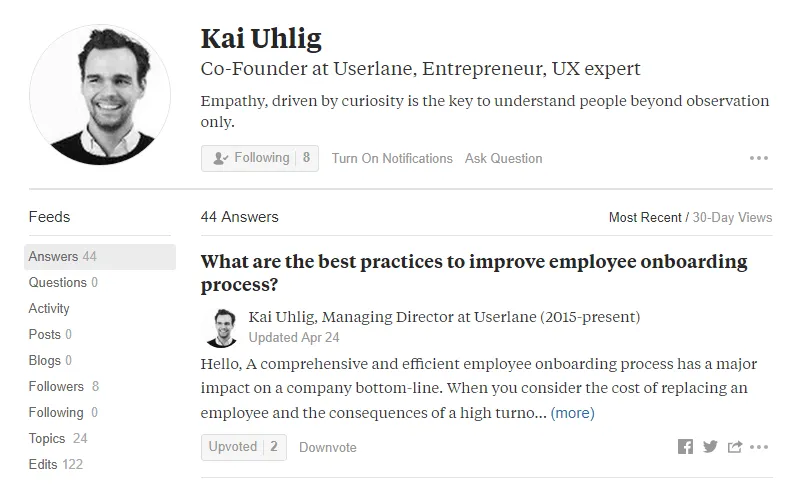
Allow your users to benchmark their experience with others and compare their results to push them to integrate your solution even more deeply in their daily routine!
There’s no cookie-cutter solution and the most important thing is that each gamification element you introduce must make sense within the overall user experience and your product.
Gamification is a tool for motivational design that draws from behavioral elements such as loss aversion, power of defaults and confirmation biases.
Feedback loops are generated through observation (stimuli), learning, and reinforcement within the software.
Game elements can facilitate the learning process and make the whole experience a lot more engaging.
Important concepts to reinforce the loop:
- Learn by doing
- See what other do and what they’ve achieved
- Collect immediate feedback (positive or negative)
- Conditioning through outcomes and consequences
- Clear rewards
- Unexpected positive results (overdeliver on promises)
Introducing Rewards
As mentioned, rewards can be expected on unexpected. Games often use unexpected rewards to generate delight and activation. Think of badges or extra tools you get just for showing up…
Novelty elements enhance activation and rewards can be tangible or intangible while being task non-contingent, engagement-contingent, completion-contingent or performance-contingent.
Gabe Zicherann summarizes rewards with the acronym SAPS (Status, Access, Power, Stuff). For companies this translates into monetary incentives, status and authority, additional benefits and features.
Continuous rewards become less effective over time. After a while they become less enticing and don’t seem special anymore.
There was a home improvement store in Germany that kept advertising 20% off on every item to create urgency but people soon realized that the “campaign” actually lasted 365 days a year and the brand lost their credibility.
Reward your customers for their loyalty and engagement at fixed intervals or following specific ratios and rules. The idea is finding the sweet spot between continuously motivating customers through their journey and making them actually feel special.

Caveat: rewards can be counter-productive as they become substitutes for intrinsic motivation. Make sure that your users are primarily motivated by actual excitement for your product and feel compelled to engage with it because of the results they achieve! Then you can use gamification techniques to accelerate the process and create champions who feel proud to endorse your product.
Intrinsic motivation derives from awareness and delight and is the most powerful element you can activate in order to boost engagement and activation.
Self-determination theory shows us that there are different kinds of motivation linked to positive emotions in three stages of the motivational spectrum: competence, autonomy, relatedness.
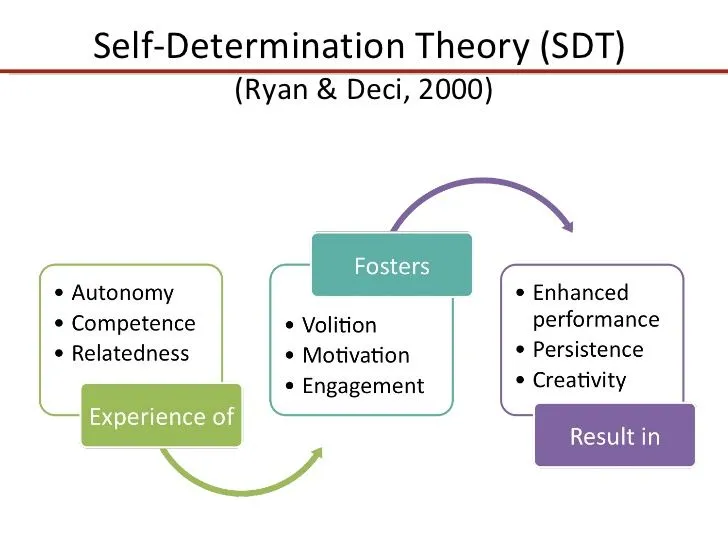
These three innate needs lead us to being motivated when we feel in control and master the environment and the outcomes of our action, have a sense of free will when doing something or acting out of our own interests and values, feel a sense of belonging that involve fitting in something bigger than ourselves.
That’s why a winning company with a great customer success program can create a community around their brand, a tribe of supporters who can truly use an application to its full potential, can become creative and determine how to steer operations while endorsing the product and championing it voluntarily.
How to Design the Experience
The whole journey needs to be purposive and customer-centered. It must include a balance of control and freedom, include analytics, be iterative and optimizable.
The UX must depend on the primary objectives (which you need to separate from the means) and target behaviors must be in line with the user personas and be flexible so that you can customize the journey for different user segments who have different needs and present a different level of proficiency or set of requirements.
You need to devise activity loops and deploy the appropriate components to manage dynamics and mechanics of the environment you created.
Be sure to implement success metrics! Say you want to implement elements that boost engagement. You need to put in place a system to measure number of daily or monthly active users (DAU/MAU) to monitor and optimize the process.
Design elements need to be created around a specific persona. Hence, the starting point, as always, is collecting as much data as we can about our users and define their needs and expectations.
Introducing Activity Loops
Engagement loops involve three stages:
- Motivation
- Action
- Feedback
Everything that occurs in your software must be linked to a reason that motivates the action and leads to outcomes which are presented with instant feedback.
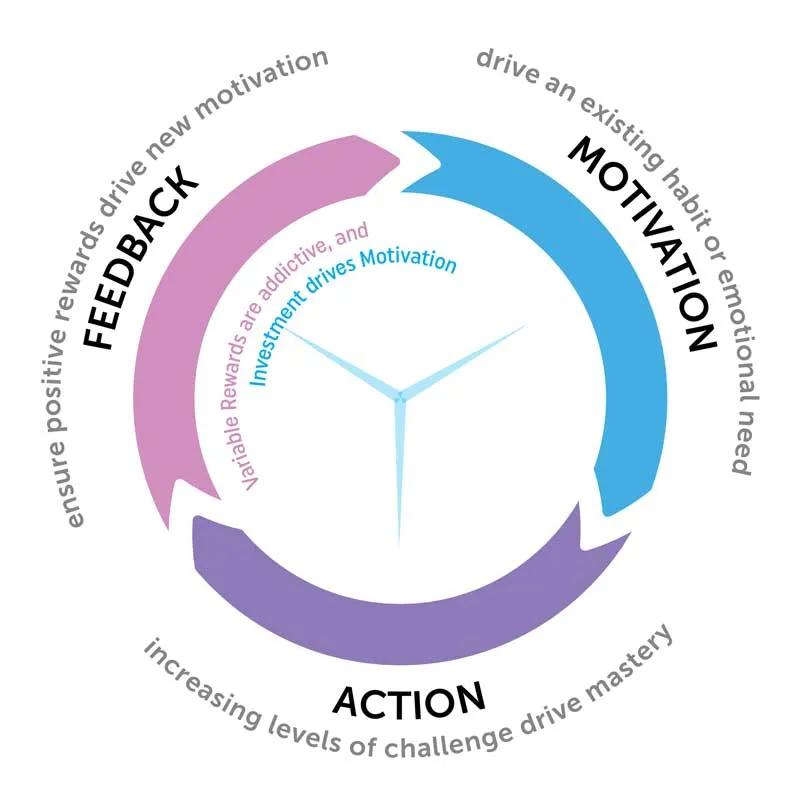
Progression loops involve different stages within the software.
It’s vital that different activities be subdivided into categories. Say that you offer a CRM solution. Some activities will be grouped under “setup” others under “create and manage accounts” others under “mange your team”….and so on and staggered when presented.
Users need to be onboarded in stages. After a steep climb they need to close a chapter before moving on to the next one. This sense of accomplishment is the basis for progression loops.
These chapters represent the plateaus where your “climbers” (users) can rest before moving on to the next portion of the ascent.
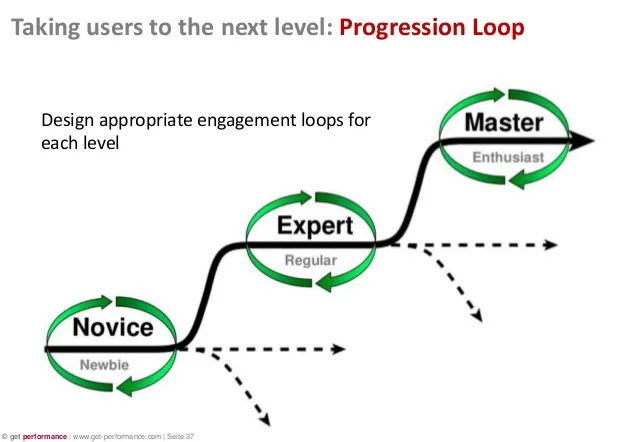
In games, this is represented by levels that become more and more complicated and prepare players for the final “boss fight” . After each level there can be a lightning round or something similar and users can be rewarded for their achievements, can rest, and experience a balance between perceived skills and perceived challenge for the next level.
Incentives help reinforce the activity loops and create activation providing meaning (status/results) and emotional rewards.
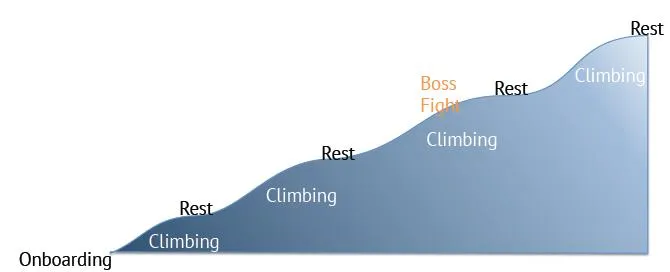
Again, watch out! Think of communities such as Quora or StackOverflow. Incentives are put in place to foster positive behavior but these community don’t just work on the basis of extrinsic motivation. Members like their statuses, rewards, badges points and so on…all these elements reinforce the behavior of being active members of the community. But the utility and dynamics created by the community itself provide a strong form of intrinsic motivation that leads to engagement. The return on investment is clear from the very beginning.
Gamification and businesses
Fun elements can be present in serious settings. Microsoft created Minesweeper and Solitaire to quickly make users feel comfortable with click, double click and drag and drop functions connected to the introduction of the mouse. And they also gamified the translation of their operating system into multiple languages with awards for people who could spot mistakes.
Google tried to do the same to train their software for image recognition and other AI applications.
People at work are motivated by incentives (such as stock options for example) and intangible rewards, such as title, status or authority.
Government agencies and private institution foster good behavior (for example in terms of energy consumption, health and so on) using simple gamification tactics.
Habit Formation and Customer Success
SaaS companies create their own software environment around specific UX rules they design. Hence, incorporating gamification elements is just a matter of setting the proper objectives and finding the right balance.
The Fogg behavior model shows that in order for a behavioral change to occur three elements need to converge:
- Motivation
- Ability
- Trigger
If one element is missing activation fails.
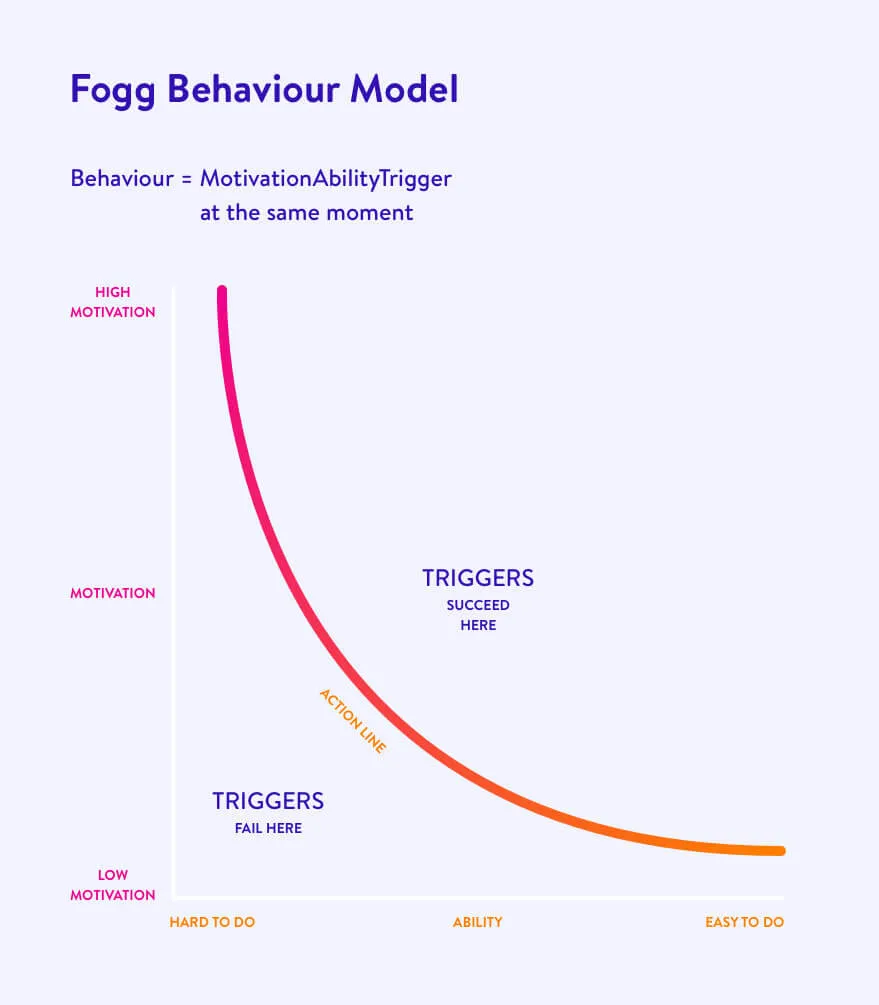
If for example your users don’t rate your product online, this means that one of the three factors is missing.
What incentives did you offer? Did you make it easy for them to immediately access the platform where you collect ratings? did they receive a specific CTA at the right time?
The same analysis can be done within your software. You can try to define why users are not engaging with all your features or why they aren’t as active as you’d like in your software by ruling out these elements one by one.
The model also investigates these elements at a deeper level and introduces three core motivating factors (pleasure/pain, hope/fear, social acceptance/rejection), six simplicity factors for ability (time, money, physical effort/labor, brand cycles, social deviance, non-routine) and three types of triggers (facilitator, spark, signal).
Gamification elements can help overcome the motivation and ability trade off, and find the right timing for creating triggers through engagement, and progression loops.
CX Design and Gamification
Gamification techniques seem to be extremely valuable in order to create the basis for customer success in SaaS businesses.
But one word of advice….Bad gamification is always worse than no gamification at all!
Design the whole UX and CX carefully with clear objectives in mind and focus on those elements that truly boost engagement and activation.
Plus, you aren’t alone in the process. We at Userlane designed the perfect onboarding software that takes into account several psychological elements aimed at creating and reinforcing positive behavior and proper engagement and progression loops.
Our virtual assistant supports users with chapters that include guides that can be paced during the onboarding phase. These onscreen guides steer users through your software interactively and help them quickly reach all the essential milestones we presented in this article from quick wins to mastery, and autonomy while reminding users of their achievements and creating a great feedback loop that reinforces activation and retention.
Our solution is designed by UX experts who carefully took into account all essential elements that lead to engagement, activation, and retention.
Click the link below to learn more about our customer success solution!
